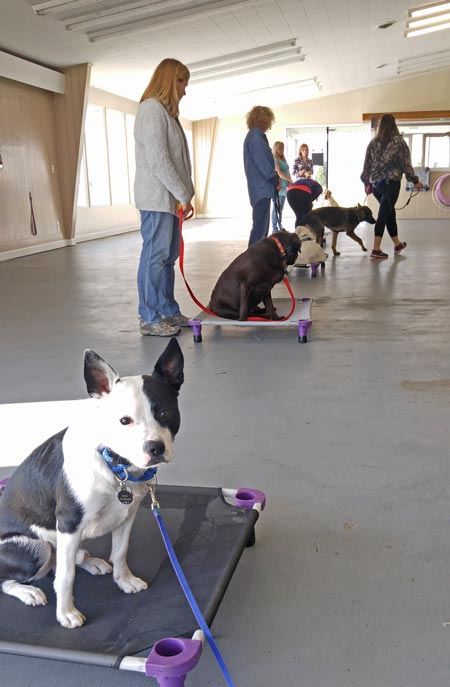The Single Hardest Thing About Dog Training
 No matter what training method you use, what breed your dog is, or how experienced you are, there is one HUGE training challenge that all dog owners have: striking the balance between making “it” harder and making “it” too hard too fast. “It” is whatever you are trying to teach your dog.
No matter what training method you use, what breed your dog is, or how experienced you are, there is one HUGE training challenge that all dog owners have: striking the balance between making “it” harder and making “it” too hard too fast. “It” is whatever you are trying to teach your dog.
Let’s take “sit” for example. People who only practice “sit” in their living room for a cookie end up with a dog who will never sit any other time. He doesn’t sit at the vet. He doesn’t sit when company comes over. He doesn’t sit on a walk. IT’S NOT THE DOG’S FAULT. Since the owner never practiced in new and more challenging environments, the dog literally only thinks that “sit” applies in the living room.
People who make “sit” too hard, too fast are setting the dog up to fail. Let’s say the dog is holding a sit for 3 seconds in the house, and now the owner is practicing it outside and expecting the dog to hold the sit for 60 seconds. The dog gets up, and the owner fixes it. The dog gets up again, and the owner fixes it. The dog lays down, and the owner fixes it. But since the expectation is 60 seconds, the owner is getting more and more frustrated. (Hint: the dog is also getting frustrated.) The dog fails. AND IT’S NOT THE DOG’S FAULT. These owners often come to me and say that their dog is stupid. The dog isn’t stupid. But dogs will only put up with so much frustration before they stop trying. And if your dog stops trying, you have no traction.
Striking the correct balance is the challenging part. You see, it’s easy to assume your dog knows something and stop actively practicing it. It’s ALSO easy to ask too much and get upset when your dog fails. Every dog is different and each situation is different, but there is a loose rule that can help you navigate this puzzle. The Rule of Threes.
The “Rule of Threes” simply states that if you dog does something perfectly three times in a row, you need to make it more challenging. The Rule of Threes ALSO states that if your dog fails three times in a row, you need to make it easier. Often we think about distance, distraction, and duration when we make tasks harder or easier. Whenever possible, make your practice a part of your daily routine.
Have fun working with your dog! But remember, to get the behaviors reliably you must strike the balance between making a task more challenging and setting your dog up for success.




